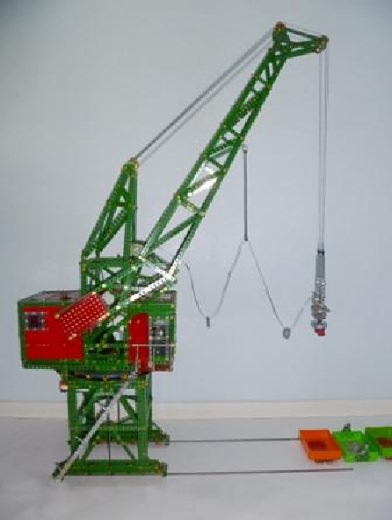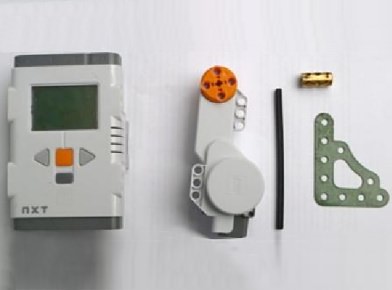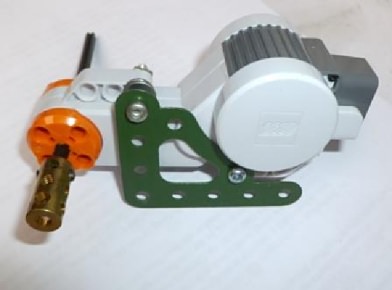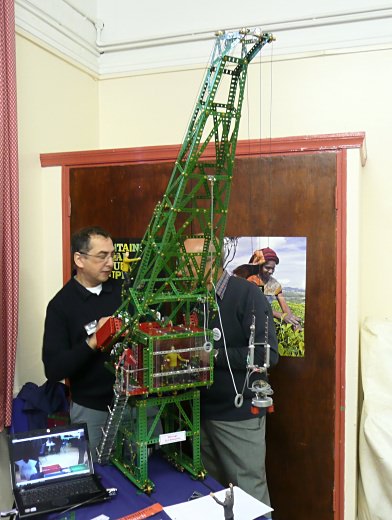Robotic Dockside Crane
Written by Allen Berman for our March 2011 Newsletter
Some of you may remember my Giant Walking Dragline shown at the SELMEC exhibition a few years ago. It had five separate motors to control the hoisting, dragging, luffing, slewing and walking actions. It also boasted a unique control box of my own design that allowed the model to be demonstrated in action. The main problem with the model was that I always needed to be present to operate the controls as it would not run automatically. I had tried building in a programmable microcontroller, but could never get the feedback required for precise positioning of the motors.
Along came the Lego Mindstorms NXT robotic kit (a bit like an up-market technical Lego set, but with a programmable controller and geared motors with encoders for position feedback). It became apparent to me that this might solve my problem. The motors can be rotated in precise, repeatable one degree steps (or rotations of shaft or timed operation). The options are forward/reverse, 0–100% power, ramp-up/down, coast/brake.
At this stage, I did not want to experiment on the dragline until I was sure that the Lego motors could handle the weight of a full sized Meccano model. I chose the supermodel SML35 Level Luffing Dockside Crane, because it would also be a suitable model for automation. I decided that a classic electromagnet from the Elektrikit would be more appropriate than the automatic grab featured in the model plan.

SML35 Level Luffing Dockside Crane
Adapting the Lego motors was simplicity itself. Although Lego uses a different pitch (hole spacing) to Meccano, it seems that the corner gusset (part 108) hole spacing is just right for the motors, using long screws and appropriate spacers. The Lego drive shafts are splined and slightly thicker than Meccano 5/32” rods. All that was required was to shave a few gnats’ whiskers off each of the four high points using a sharp knife in a scraping action. You will need to do this for about ½” length of the shaft. The Meccano coupling (part 63) can then be pushed on and secured with two grub screws aligned with the grooves in the spline. The plastic Lego shafts are incredibly strong in torsion, so there is no danger of them twisting if you use the maximum torque that the motor can supply. Further details can be found in the February 2011 edition of the North East London Meccano Club Newsletter.

Lego NXT controller, motor and axle

Mounting the motor and fitting Meccano parts to its shaft
Needless to say, the experiment was a success and the model of the Robotic Level Luffing Dockside Crane has been shown at five events, two of which were three day shows at Sandown Park and Alexandra Palace.
So, did I succeed in my quest for a fully automated, programmable model? The answer is ‘yes’ and ‘no’. Although I no longer need to operate the model (apart from manually starting the demonstration program), I am still required to be by the model all of the time, explaining to people what is going on and how come no one seems to be controlling its movements. I just can’t win!

Alan (left) operating his robotic crane